HOME Potential impact of photonics technologies
Characteristics of light and their applications

When you hear the word light, you probably imagine lighting, solar power generation, the Internet, or something similar, but it is not an exaggeration to say that photonics technologies are indispensable in all kinds of fields.
Here, we introduce characteristics of light, applications in industries, and photonics and electronics components that support such applications.
What are the characteristics of light and their advantages?


Light is invisible
We all know that air is invisible. However, when we see rustling leaves and moving clouds through a window, we can recognize the existence of air in the form of wind.
In the same way, we cannot see the light swirling freely around us.
On a sunny morning, you look at the plants in your garden through a window, and a bird flies into your view. Why can you see the bird even though the light shining on the garden has remained the same? It is because light reflected off the flying bird and entered into your eyes through the window, which allowed you to recognize the shape and color of the bird. This is also why you can see the plants in the garden.
Though we cannot see the light swirling around us in this way, it behaves differently when it collides with an object, and we can recognize the object when the light enters our eyes.
These behaviors of light include absorption, transmission, reflection, and scattering. Light also behaves uniquely depending on the combination of the color of the light (wavelength) and the object with which it collides, which can enable you to recognize objects in more detail.
In other words, light can be used to detect the characteristics and changes of an object in detail without touching it, and when combined with electronics technologies, it enables analysis and recording of objects and sharing and transmission of information.


Light is fast
As light can travel around the earth 7.5 times per second, it can move at an ultra-high speed of approx. 300,000 km/s.
This nature can be used in technology to rapidly detect changes and movement of an object. Furthermore, since large volumes of data can be handled in short amounts of time by using light as a medium, light is utilized in a variety of fields of application for information communication, such as optical communication and diagnostic imaging in medical care.
Light is gentle and strong
Light can express gentleness and strength through its intensity, color, dispersion, and other characteristics. Taking advantage of this, light is used for lighting systems and in technologies such as display monitors that transmit information we can interpret.
In addition, since light is a medium that converts solar energy into electricity, it can enable environmentally friendly power generation.
Furthermore, light can be concentrated onto a single point in space and time to create light with a high energy density. This technique is used in laser processing equipment and other equipment that require high energy densities.
How are photonics and electronics technologies used in industries?
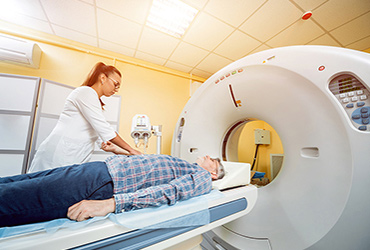

Using light as a medium to detect the characteristics of an object
A TV camera captures the equivalent of what you see with your eyes by using a two-dimensional photodetector and allows the image to be recorded and transmitted.
In addition, since it is possible to extract necessary information through processing and analysis of images, this is applied in a variety of fields, such as diagnostic imaging, contamination inspection, quality control, academic research, and security.
By analyzing the behavior of light absorbed or emitted by an object based on its color (spectral analysis), the components of the object can be identified.
This is used in fields that require objective evaluations, such as in the case of quantitative and qualitative analyses of chemical compounds, diagnosis with blood analyses, and sugar content and degree of ripeness in the chemical, medical, and agricultural fields, respectively.
The distance to an object can be measured by applying light to the object and measuring the time of flight (TOF). This principle is applied to such things as automated driving, cleaning robots, and three-dimensional measurement techniques.


Using light as a medium for information transmission
There are methods of transmitting digital information using radio waves and wires, but it is possible to accurately transmit more information by taking advantage of the high speed of light. This is applied in communication fields, such as in the case of global fiber networks and optical Internet networks, and in short-distance wireless communication with such things as remote controls.
With media such as CDs, DVDs and Blu-rays, digital signals are encoded as pits and lands to store information. When a small narrowed laser light is applied to them, the behavior of the reflected light changes due to the pits and lands, and this can be read as a digital signal. By using light in this way, a large amount of data can be stored compactly and carried with you.
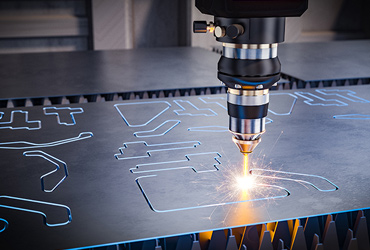

Using light itself
Light is used not only for lighting, which is essential for our daily lives, but also to enrich our lives.
The color and two-dimensional spread of light can be used as a means of transmitting information to people. This is utilized for display monitors that serve as an interface between computers and people and for digital billboards to broadly convey information.
A lens can be used to concentrate sunlight on a single spot to make a hole in paper. Similarly, high amounts of energy can be obtained by taking advantage of the characteristics of lasers by focusing a laser to a small, micron-sized spot, and light pulses loaded with this energy in short periods of time can be also generated.
By selecting laser light with the intensity and spot size that suit the purpose, lasers are used in fields that require precision, such as surgery and ophthalmic treatments in the medical field and cutting and welding of metal in industrial fields.
UV rays are known to have potent influences on skin, such as sunburn; however, they are used in a wide range of applications because they also have potent influences on non-biological substances.
UV rays are used to sterilize bacteria and viruses adhering to objects.
In addition, since some substances harden when exposed to UV rays, they are used in stereolithography 3D printers in combination with UV lasers. Furthermore, UV rays are used for bonding in manufacturing processes and dental therapy because of their advantage of instant adhesiveness.
X rays, γ rays, and β rays (electron rays) are also electromagnetic waves and have the nature of light. Since they easily penetrate the human body, they are used for treatment of cancer and diagnosis in the medical field.
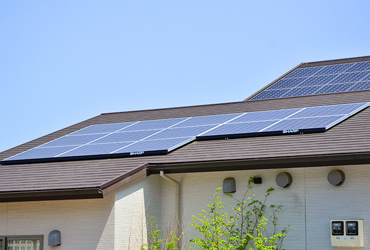

Using sunlight
Conversion of solar energy into electricity is applied to commercial and household power generation. In addition, combinations of lighting and solar cells are applied to streetlights, etc.
Solar heat and stored solar heat are applied to cultivation in greenhouses and energy-saving houses.
Photonics technologies are applied in a variety of industrial fields.
| Industrial field | Product group | |
|---|---|---|
| Living | Entertainment | TVs, smartphones, games, service robots, etc. |
| Security and reassurance | Security cameras, biometric identification, fire detectors, sterilization, etc. | |
| Communications | Optical Internet, telephones, remote controls, etc. | |
| Home electrical appliances | Toilets, cleaning robots, refrigerators, air conditioners, etc. | |
| Automobiles | Lighting | Headlights, various forms of lighting |
| Security and comfort | Automated driving, automatic wipers, dashboards, dashboard cameras, heads-up monitors, road-to-vehicle communication, etc. | |
| Food | Agriculture and fisheries | Growing environment control, quality inspection (sugar content, degree of ripeness, functional ingredients, freshness, flavor, protein), etc. |
| Processing and safety | Robots, foreign article inspection, sterilization, etc. | |
| Health and medical care |
Academic research | Optical microscopes, TV cameras, chemical analysis machines, genetic analysis, etc. |
| Diagnosis | Endoscopes, microscopes, blood analyzers, pulse oximeters, blood sugar level measurement, genetic analysis, X-ray radiography, PET/CT/SPECT, OCT, fundus cameras, vital measurements, viral tests, PCR, etc. | |
| Treatment | Medical laser scalpels, laser treatment, ophthalmology, dentistry, etc. | |
| Promotion of health | Wearable measurement instruments, etc. | |
| Manufacturing | Production | Laser processing equipment (cutting, joining, welding, padding, grinding, surface reforming, marking, etc.) Stereolithography 3D printers, robots (processing, assembly, inspection, picking, transportation, etc.) |
| Quality control | Measurement instruments, crystallinity evaluation, residual stress measurement, analysis (radiation, UV rays, IR rays, THz waves), image equipment, failure analysis, etc. | |
| Architecture | CAD, three-dimensional measurement, surveying, etc. | |
| Environment and energy |
Lighting | Incandescent lamps, halogen lamps, fluorescent lamps, LEDs, brightness control |
| Solar power generation products | Large-scale solar power generation equipment, garden lighting systems with built-in solar panels, etc. | |
| Environment monitors | Measurement and identification of bacteria and microorganisms, gas analysis (FTIR) | |
Product group
Living
Entertainment
TVs, smartphones, games, service robots, etc.
Security and reassurance
Security cameras, biometric identification, fire detectors, sterilization, etc.
Communications
Optical Internet, telephones, remote controls, etc.
Home electrical appliances
Toilets, cleaning robots, refrigerators, air conditioners, etc.
Automobiles
Lighting
Headlights, various forms of lighting
Security and comfort
Automated driving, automatic wipers, dashboards, dashboard cameras, heads-up monitors, road-to-vehicle communication, etc.
Food
Agriculture and fisheries
Growing environment control, quality inspection (sugar content, degree of ripeness, functional ingredients, freshness, flavor, protein), etc.
Processing and safety
Robots, foreign article inspection, sterilization, etc.
Health and medical care
Academic research
Optical microscopes, TV cameras, chemical analysis machines, genetic analysis, etc.
Diagnosis
Endoscopes, microscopes, blood analyzers, pulse oximeters, blood sugar level measurement, genetic analysis, X-ray radiography, PET/CT/SPECT, OCT, fundus cameras, vital measurements, viral tests, PCR, etc.
Treatment
Medical laser scalpels, laser treatment, ophthalmology, dentistry, etc.
Promotion of health
Wearable measurement instruments, etc.
Manufacturing
Production
Laser processing equipment (cutting, joining, welding, padding, grinding, surface reforming, marking, etc.)
Stereolithography 3D printers, robots (processing, assembly, inspection, picking, transportation, etc.)
Quality control
Measurement instruments, crystallinity evaluation, residual stress measurement, analysis (radiation, UV rays, IR rays, THz waves), image equipment, failure analysis, etc.
Architecture
CAD, three-dimensional measurement, surveying, etc.
Environment and energy
Lighting
Incandescent lamps, halogen lamps, fluorescent lamps, LEDs, brightness control
Solar power generation products
Large-scale solar power generation equipment, garden lighting systems with built-in solar panels, etc.
Environment monitors
Measurement and identification of bacteria and microorganisms, gas analysis (FTIR)
When photonics and electronics technologies are introduced into the development and manufacturing of products, what kinds of basic components are used?


Producing light
Light in the natural world includes sunlight supplied from space and light obtained from stars and the moon. There is also light emitted from living things, such as fireflies and jellyfish.
In some industrial applications, these kinds of light are used effectively. However, in order to be able to control light freely in accordance with the application, it is necessary to generate easy-to-use light from electricity.
In traditional applications, incandescent lamps and discharge tubes have been used, but these days, LEDs and lasers have become the major light sources.
The elements required for light sources include the shape (size and connectivity with other components), color (wavelength), coherence, intensity, stability, and durability, so there is an enormous range of light sources.
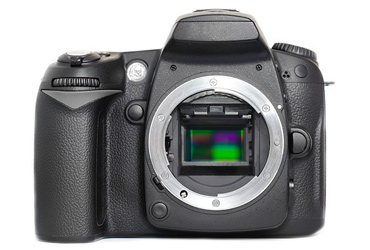

Detecting light
To obtain information about the changes and images of substances by using light, a photodetector that detects light and converts it into an electric signal (electron) is required.
There are photodetectors called photodiodes, CMOSs, CCDs, photomultipliers, etc., consisting of one element, elements arranged in a single row (one-dimensional), or elements arranged in a matrix (two-dimensional), depending on the purpose.
There are many kinds of photodetectors with differing characteristics, such as the size of the photodetector, color sensitivity (wavelength), response speed, and noise.
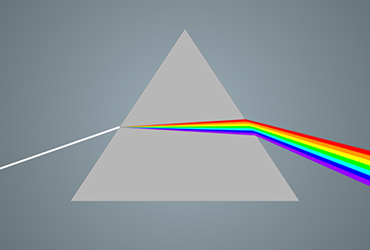

Operating light
When using produced light and attempting to detect it to obtain information from an object, it is necessary to guide the light from the light source to the object and from the object to the photodetector. It is also necessary to narrow the light or select specific light.
For this, optical elements, such as a lens, prism, mirror, filter, fiber, or photonic crystal, are used.
Modularizing optical components
The three kinds of component, which are elements of light, described above can be used individually. However, there are modules, etc., to which electric circuits have been added to drive components for easy introduction.
In addition, there are also composite elements in which a light source, detector, etc., are integrated together into one element.
Furthermore, there are integrated modules containing electric circuits and optical elements so that signals can be sent and received digitally.








